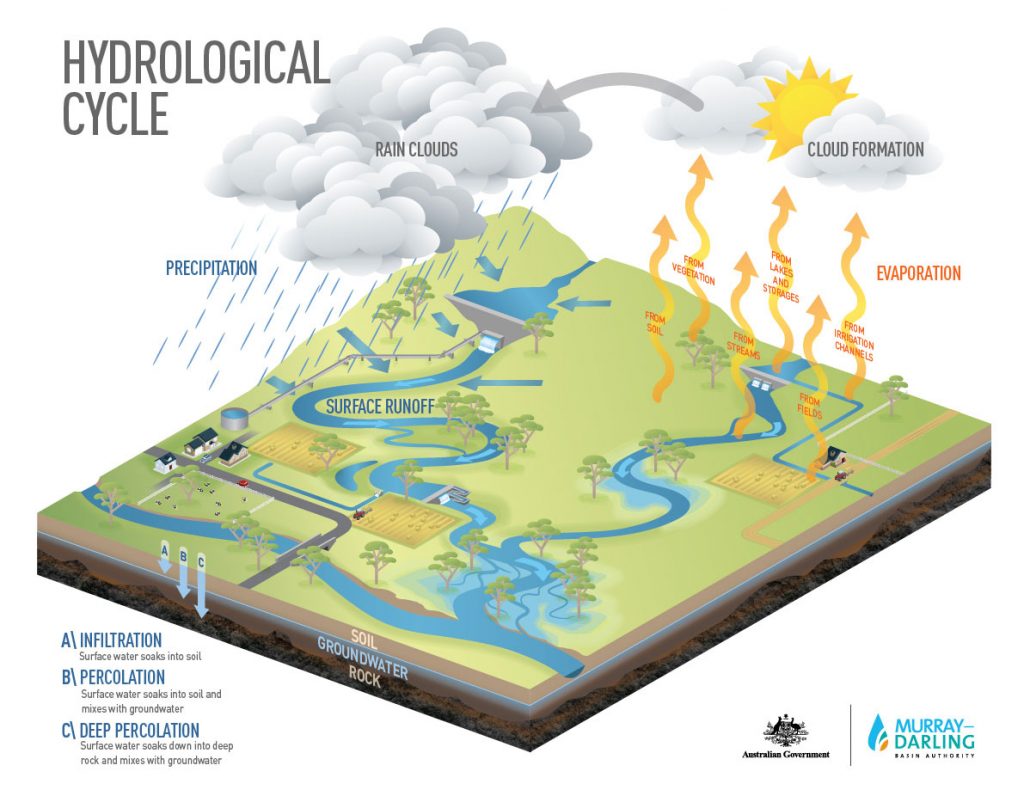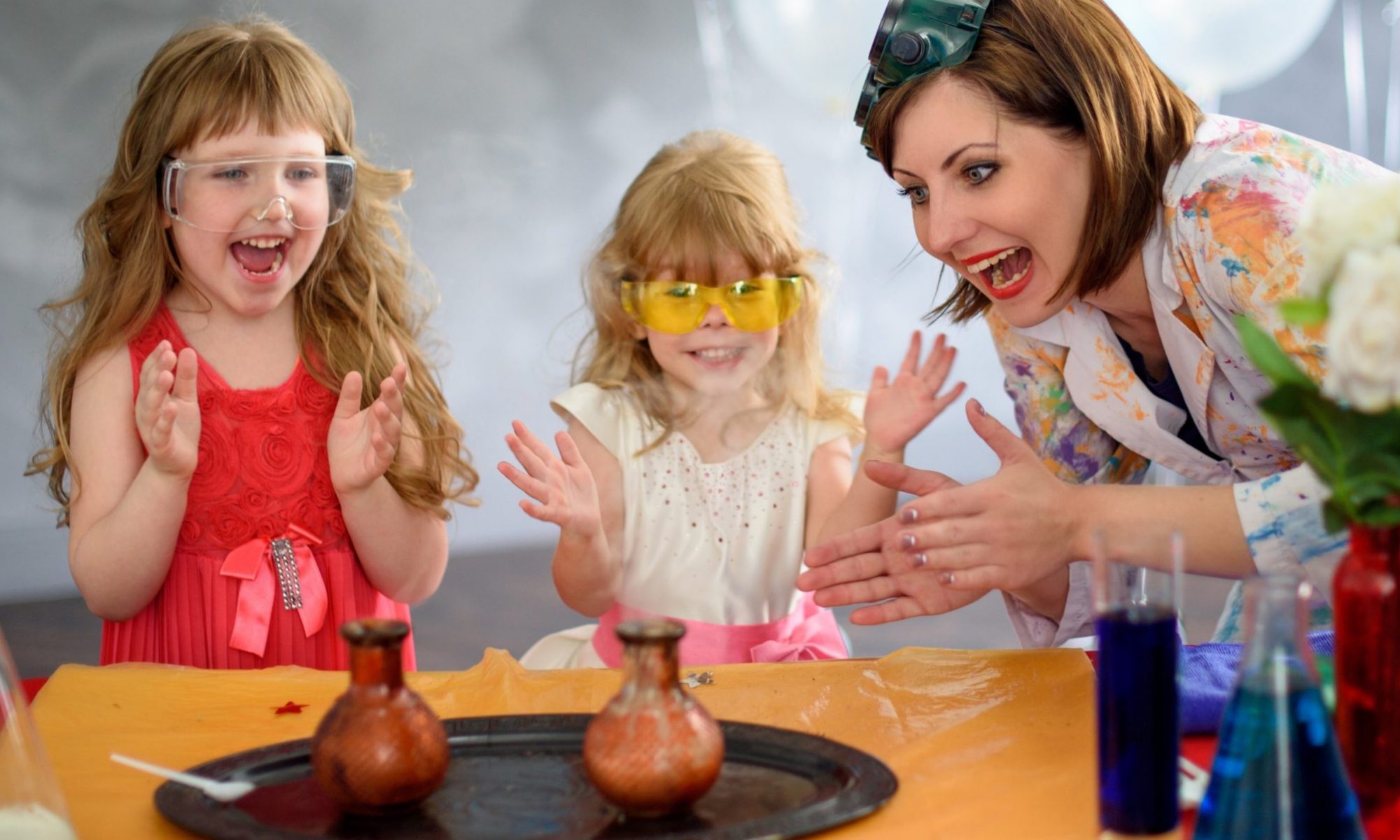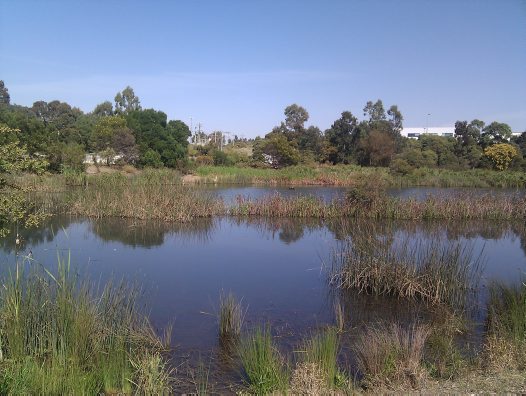The natural water cycle has been modified by people to ensure a constant water supply and the safe disposal of wastewater. The Urban Water Cycle incorporates the Water Supply System, Wastewater system and the Stormwater system.

Water supply system
- uses dams to store water
- treats water at water filtration plants
- stores water in reservoirs
- can include using desalination to provide a more secure water supply
- provides water to our homes, schools and businesses through pipes and pumps.
Wastewater system
- removes wastewater from homes, businesses and industry through the wastewater system
- treats wastewater at wastewater treatment plants or water recycling plants
- returns treated wastewater to waterways or recycles it for further use.
Stormwater system
- returns stormwater to local waterways
- removes some debris and rubbish
- re-uses stormwater for industry and irrigation.
A component of the Urban Water Cycle in Sydney is the Chullora Wetlands. The wetlands are are important for three key reasons:
- They treat stormwater runoff, to improve water quality in the upper reaches of Cooks River
- The basin and Wetlands provide detention storage to mitigate 1:100 year flooding events,
- The Wetlands are a significant biodiversity resource in a highly disturbed urban landscape.
Find out more with ABC Education resources:
Find out more about Sydney’s Stormwater network
School Water Audit
Become aware of how you are using water at your school by conducting a Water Audit. This is a fun way for your students to learn about how water is used in the Urban Water Cycle.
Story of Water
Investigate the journey of water through the environment, from the mountains to the sea through an active demonstration. Discover and discuss changes to quality of the water on this journey through the environment?
Every drop counts, being water wise!
Water is the most common substance found on earth and less that 1% is available as fresh water. Yet all plants and animals need water to survive. We need to conserve and protect fresh water resources. The Every Drop Counts learning activity explores the many ways that water is used, how you can reduce your water usage and reuse water.


